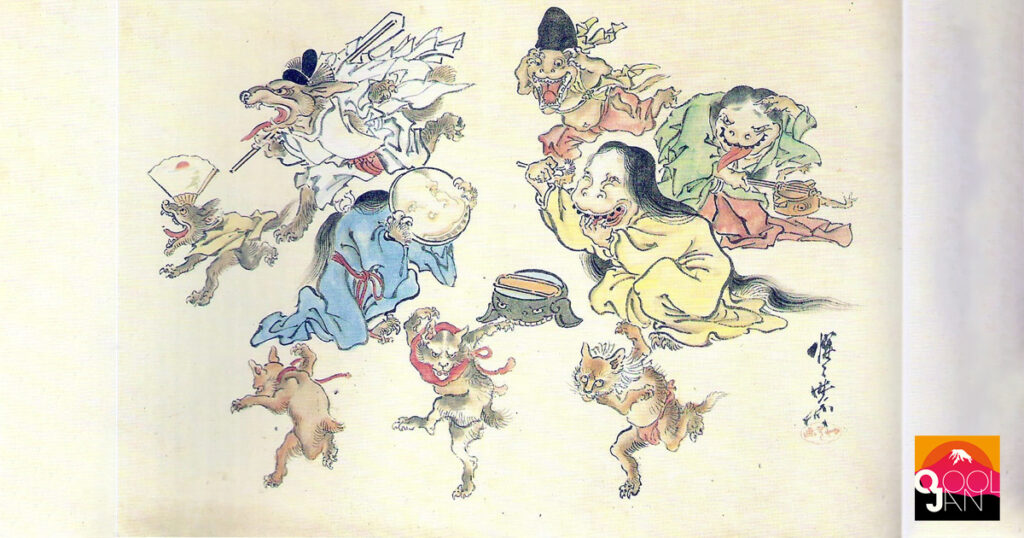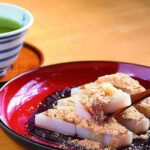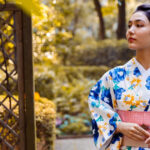If you know people who have an interest in Japanese horror or mythology, this might be the article for them. As I love this side of Japanese culture personally, I thought it might be interesting to share my favorite yokai and yurei. In a lot of cases, you can even see where some of the modern movies got their inspiration.
5 Famous Yokai
Bakemono
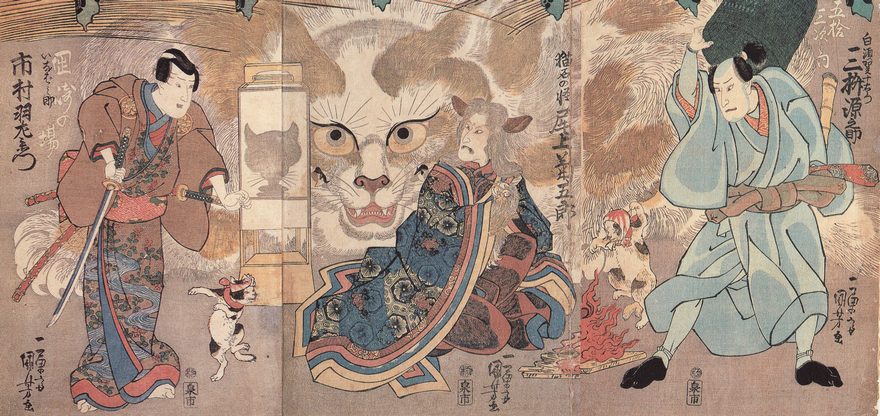
“Ume no Haru Gojūsantsugi” by Utagawa Kuniyoshi via Wikipedia
Notice that the old lady is actually a cat that has transformed, as well as the dancing cats.
Bakemono are the shapeshifters of Japan. They are usually animals, such as cats and foxes and often take either human or destructive form. It really depends on their mood, I guess. These should not be mistaken for nekomata that, although are very similar in some aspects, are not the same.
Oni

Via Wikipedia
This is one that more famous types of Yokai in Japan. Oni are basically demons or ogres. They’re humanoid, but often have interesting features. They come in various colors, shapes and sizes, and have 2 horns.
An interesting fact is that the character for Oni is 「鬼」, which actually means “ghost” in Chinese. This is because originally they were considered invisible and the meaning has slowly changed throughout time.
Kappa

Takagi Toranosuke capturing a kappa underwater in the Tamura river by Utagawa Kuniyoshi
via Wikipedia
A Kappa or “River Child” is one of Japan’s most interesting yokai. They are usually found in bodies of water (rivers, swamps, etc). Kappa are reptilian in the sense that they have scales. They vary in color; primarily greens, yellows and blues and have a dish on their head. This is meant to store water for when they are away from water and is also the source of their power. If it is broken, they are weakened and may even die.
This yokai often cause problems for humans. They can be mischievous and can even kill. They are, however, curious of human civilization and even befriend people who give them offerings. Their favorite food is the humble cucumber!
An interesting fact! A street in Tokyo is named after these creatures! In fact, we have several articles! Why not check them out!
Tengu

by Kyosai Kawanabe via Wikipedia
Tengu, or “heavenly dog” are a usually portrayed as a part bird, part humanoid yokai. They often have a long nose (at least, longer than the average person). They of course have wings and can fly.
They were originally considered disruptive and harbingers of war, however they’ve since been given slightly friendlier, more protective yokai status; albeit still dangerous.
They’re often seen with a magical feather fan. This fan is meant to be able to bring a powerful wind.
Yuki-onna

by Toriyama Sekien via Wikipedia
The Yuki-onna (snow lady/woman) is a woman that usually appears during a snowstorm. She is often depicted as a tall, beautiful women with long black hair. Her eyes, however, are meant to strike fear into the heart of anyone who gazes upon them.
She is sometimes said to have legs, however does not leave any footsteps. If threatened, she can transform into mist or snow. She is sometimes seen in a white kimono or completely naked!
Yurei
Yurei are more like ghosts in the west. Although the Yuki-onna is somewhat in between them (what with the lack of footprints!), this list will be more of your real style ghosts. I was thinking about using someone like Kayako Saeki from Ju-on (Grudge) or Sadako Yamamura (Ring), but that would be too easy, don’t you think?
Oiwa – Yotsuya Kaidan
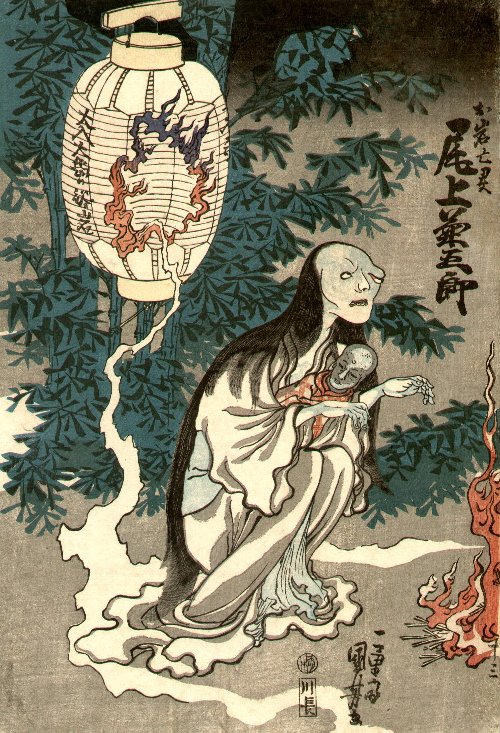
by Utagawa Kuniyoshi; via Wikipedia
Yotsuya Kaidan is probably one of the more well-known yurei stories from Japan. In fact, it’s also one of the main precursors to films like “Ring” and Ju-on.
Oita is a through a strange method. She was deceived into using a topical poisoned disguised as a cream that would disfigure her. She then committed accidental suicide, but not before cursing the person who gave her the cream. She finally became an Onryo or “vengeful spirit”.
This was made into a Kabuki play and is really worth seeing!
Okiku – Sarayashiki
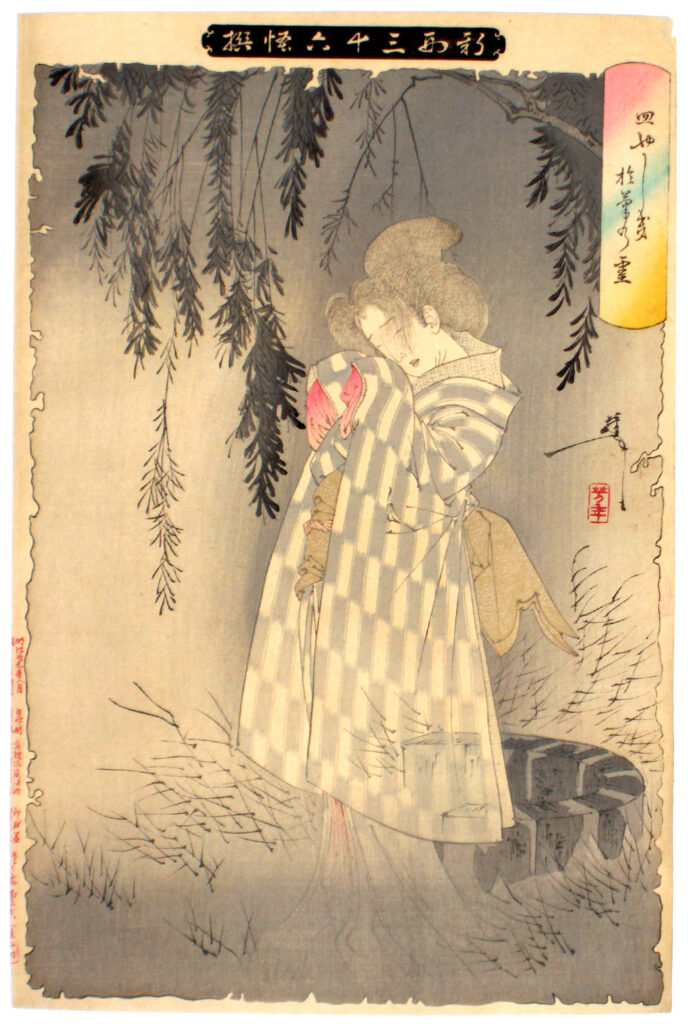
by Tsukioka Yoshitoshi via Wikipedia
As with Oita, Okiku is a vengeful spirit. She was accused of stealing a plate from a samurai and beaten to death with a bokken (wooden sword). Supposedly, the well can be found at Himeji castle. If you go there at night and see a woman asking about a plate, let us know!
Botan Doro (The Peony Lantern)
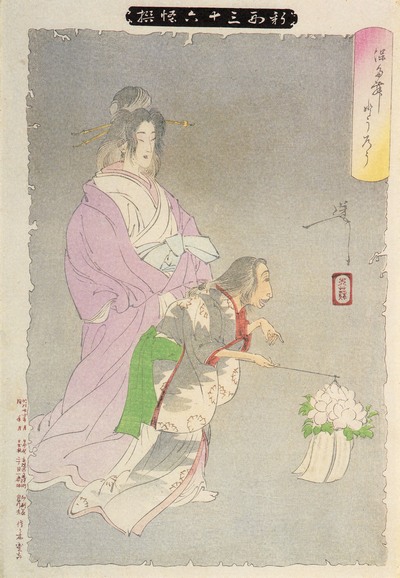
by Tsukioka Yoshitoshi via Wikipedia
This story is a bit strange, but definitely an interesting one. There are 3 major versions of the story, and two are almost the same.
Kabuki Version
The main protagonist is in love with a woman and secretly meets her regularly. He however falls ill and is unable to see her for some time. When he finally recovers, he goes to meet his sweetheart only to find out that she has died.
Praying for her spirit at a Obon festival, he notices a girl who looks strikingly familiar to that of his betrothed. It turned out that her aunt had spread rumors of her death and she was indeed the woman at the Obon festival.
Being reunited (and with the maid of the female who is carrying a peony lantern), the two lovers spend the night together.
The relationship seems to be going well, until a servant of the male lead goes to check on his master and finds him having sex with a skeleton. That’s right, necrophilia! Shocked at seeing this, the servant goes to speak with a local priest, who finds the graves of the lady and her maid. After convincing the male protagonist, a seal in placed on the house so that his dead love cannot enter.
She calls for him outside of the house and, pining for his love, his health starts to deteriorate. His servants, worried about his health (and the fact that if he dies, they’ll lose their jobs), decide to remove the seal from the house and allow them to see each other once more.
The night is finally over and when the servants go to check on their master, they find him entangled in her skeleton, dead. His face is however, blissful.
So, there’s just a taste of some of the traditional horror that is from Japan. The last one is probably the strangest, but also one of the more interesting, I think.
Do you know of any Japanese horror stories that aren’t related to the ones mentioned? Let us know!

